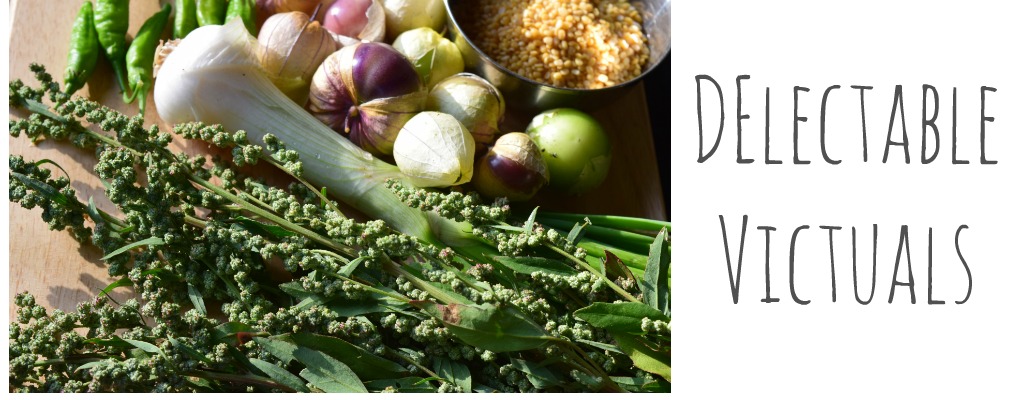Vegetarian Tamales: Steamed Corn-husk Wrapped Snack with Tempeh

Tamales are not unfamiliar here in North America. And there probably is some version of it in different cultures around the world. Delicacies wrapped and steamed in banana leaves is quite common in India and parts of SE Asia. Not too long ago, while sharing the sweet Elai Adai recipe, I couldn't help noting its similarity with savory Tamales.
There are many standard/authentic recipes on the web and in cook books for tamales. But, experimentation and fusion cuisine being my personal slant, my recipe here is atypical, to say the least.
Since banana leaves/corn husks are not as handy or ubiquitous as they used to be when I was growing up, it is not often that I get to make these wrapped steamed dishes. However, every once in a while when I visit the Lebanese/Hispanic/Asian and other international markets, I tend to stock up.
Speaking of which, I had Olive pickle from Bangladesh recently - not the kind pickled in vinegar/brine, no, these were made in the typical Indian style with spices, packed in oil - and loved it! I am digressing...
Anyway, during one of the recent outings, I picked up some dried packaged corn husks expressly for making these tamales.
The dough uses flours and meals I usually have at home, no lard, and the filling is made with tempeh.
Sweet Boli, something I intensely disliked when I was young and seem to miss right now, brings back memories... assisting my mom reluctantly, mumbling and grumbling about how I could be doing something else rather than sit there and flatten out the elastic yellow dough, stuff it with the sweetened chana dal (kadala paruppu), ball it up neatly, pat it flat again now that it has the sweet filling, oiling my palms heavily to avoid sticking...
I never realized how much I learnt being a sous chef in my mom's kitchen! Karadayan Nonbu Adai, Modhakam/Poorna Kozhakattai, Suhiyan, Boli, not to mention Muthusaram, Thenkuzhal, Mysore Pak - I wouldn't dream of making them today were it not for all the work she put me to when I was young. And I thank her for it. (Amma, if you are reading this - I probably have called you a dozen times reminding you to - hope you realize how sincerely grateful I am!)
Ingredients
For the dough wrapper:
¼ cup fine corn meal
¼ cup all purpose flour
½ cup rice flour
¼ cup canola oil
¼ cup water (plus a few Tbsp as needed)
salt and chili powder to taste
For the Tempeh Filling:
onions, bell peppers, celery finely chopped
taco seasoning -OR- cumin, coriander, oregano powder -OR- any other favorite spices
1 pkt Organic Multi-grain Tempeh
salt to taste
1 Tbsp canola or vegetable oil
Preparation
- Soak the dried corn husks in warm water for at least 30 minutes or per package instructions to soften it and get it ready for wrapping
- Dough: Combine the dry ingredients for the dough in a bowl, make a well in the center, add the oil and a little water at a time, and knead to form a non-sticky, soft dough; set aside while the making the filling
- Filling: Heat the oil in a pan, add the onions, celery, bell peppers, a pinch of salt, sauté a bit; then add the tempeh, spices, adjust salt to taste and pan-fry it to desired brownness
- Assembly: Drain the corn husks; make long strips out of one of the corn husks to act as ties/strings; Take one or two layers of corn husk, lay it flat and pat it dry; Pinch off a ball off the dough about 1.5 inches in diameter and pat it flat on the corn husk wrapper; spoon some filling in the center and wrap like a package, tie with the strip
- Cook: Steam in the food steamer that comes with the rice cooker, or in any other handy steaming apparatus. I use my Idlee Cooker, and run it for 2 cycles - about 20-22 minutes
- I typically "sacrifice" one of them to see if they are done - simply open one up and taste if the dough feels cooked enough... it turns translucent when cooked through so that the filling shows through
- Enjoy warm with dipping sauce if preferred. (I like Maggi™ Hot & Sweet Tomato Chilli Sauce with these)
Labels: corn husk, fusion, mexican, miscellaneous, snack, steamed, tamale, vegetarian










